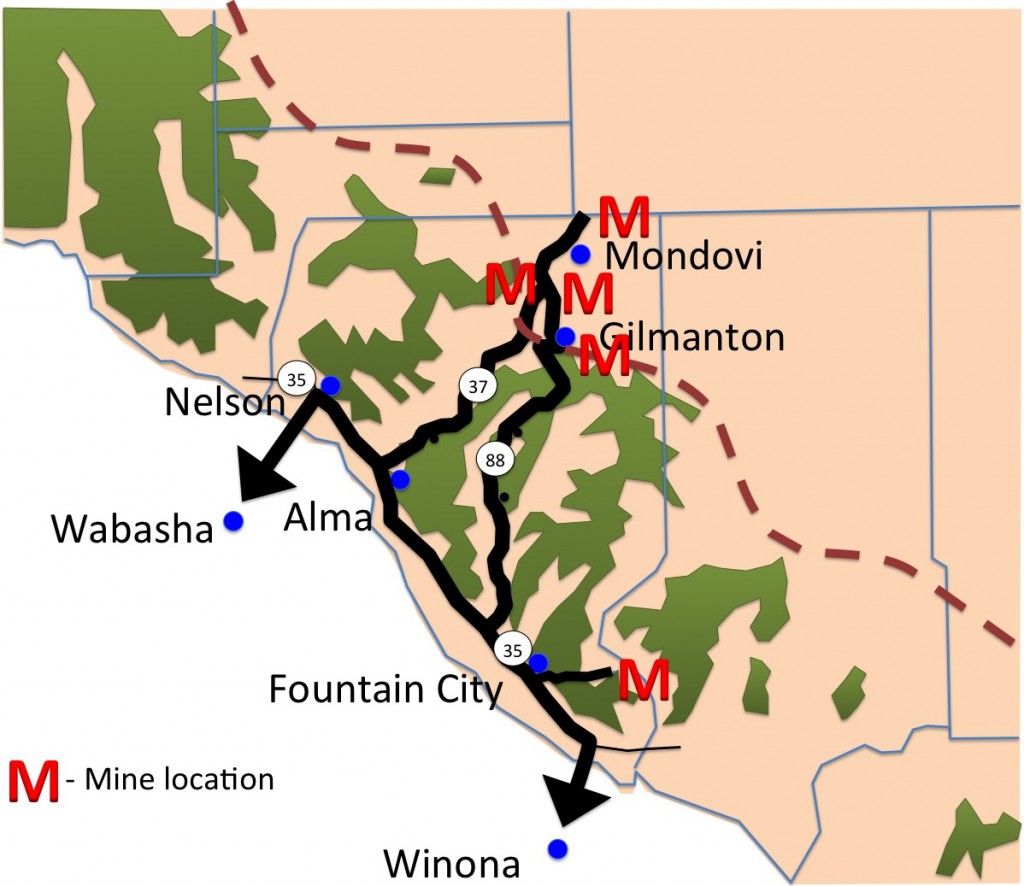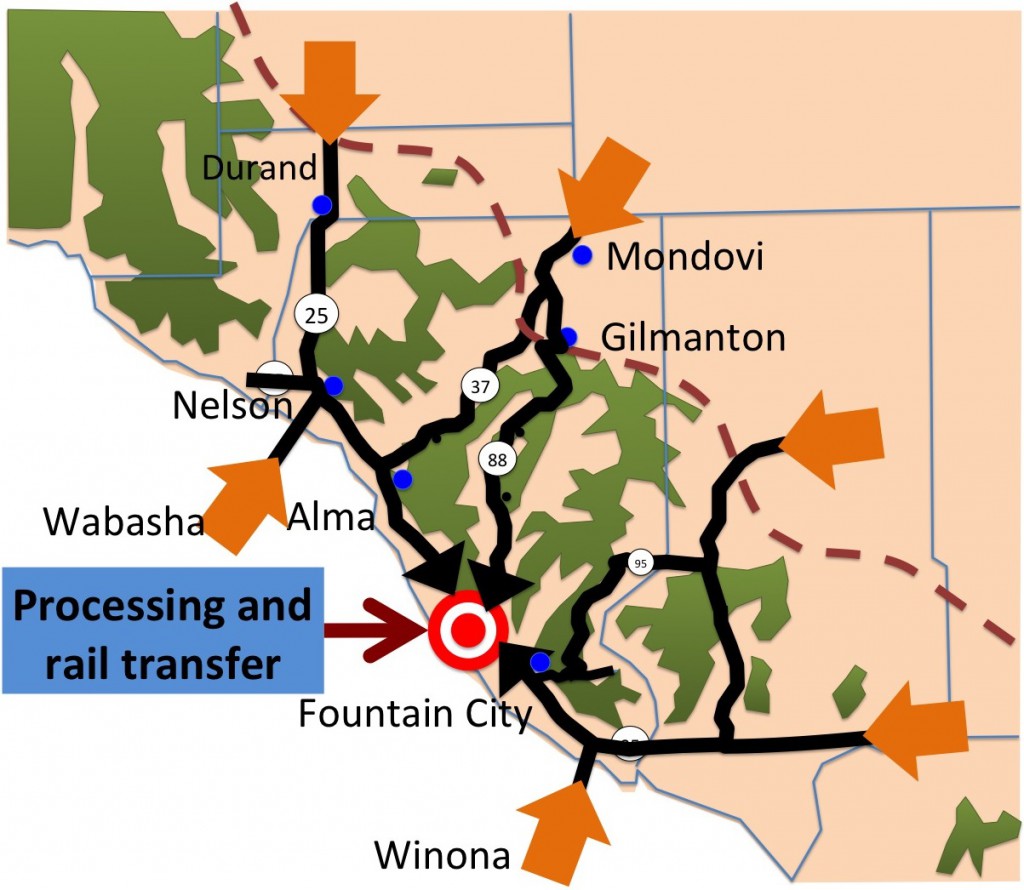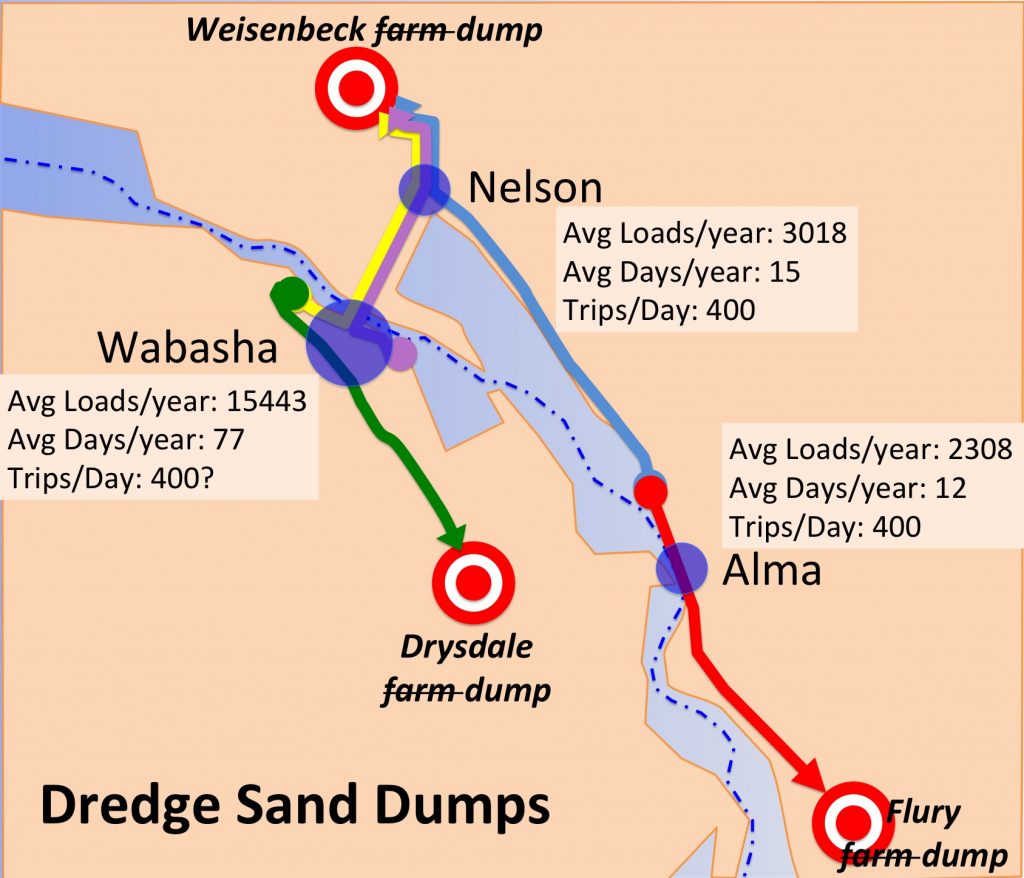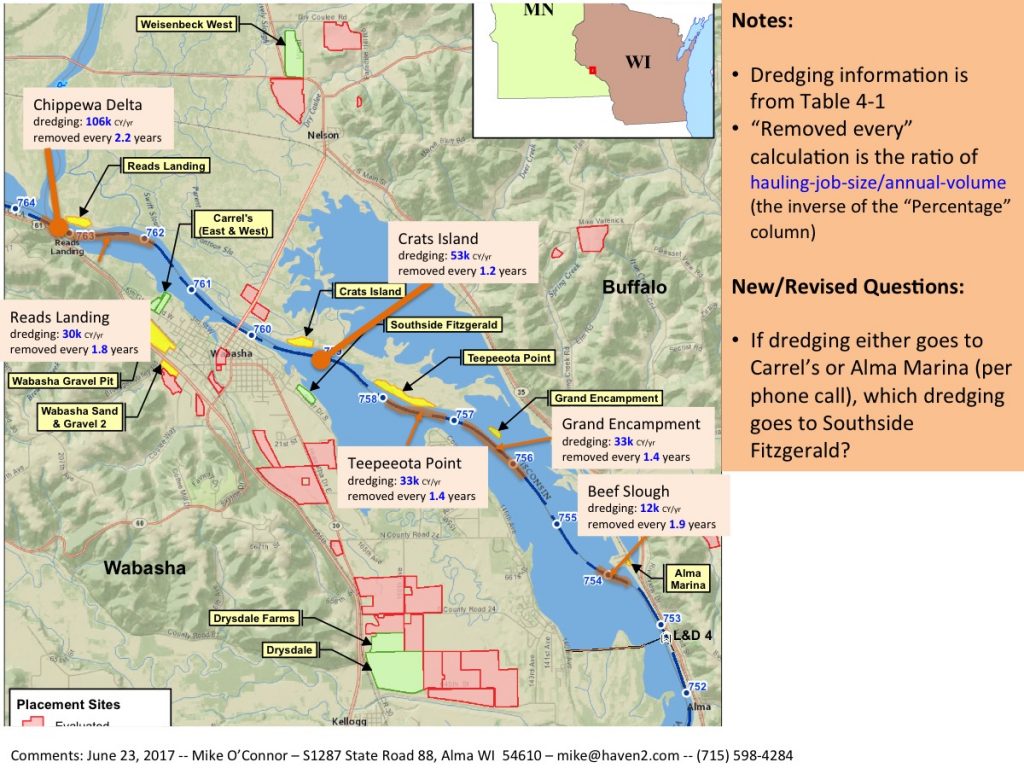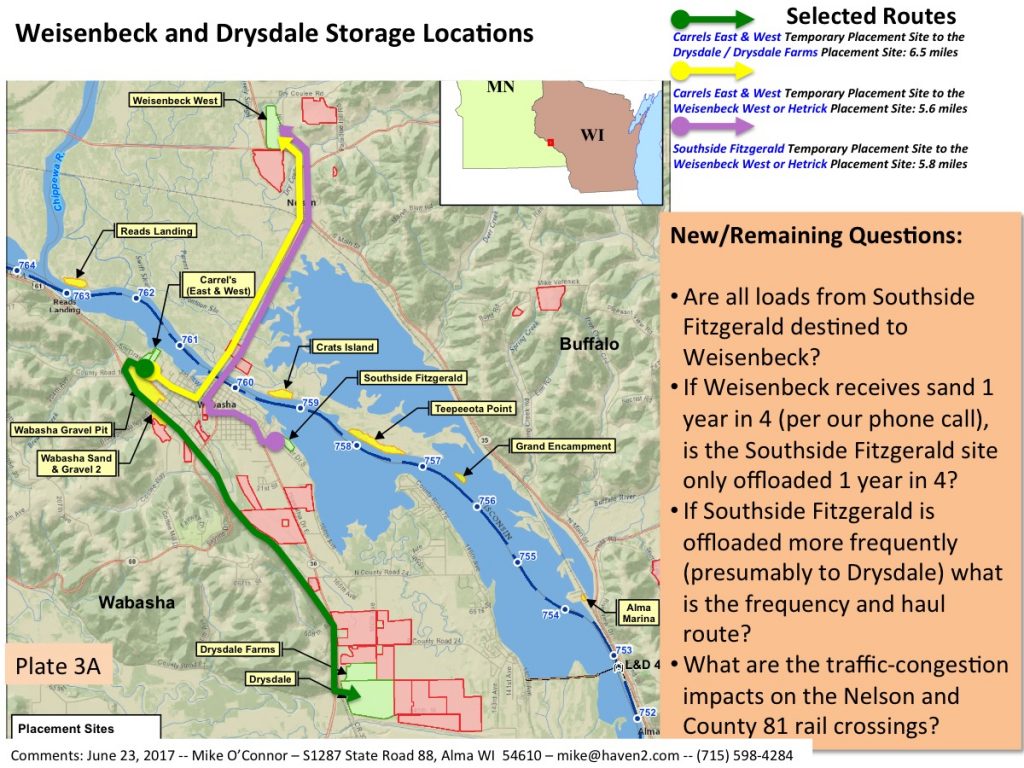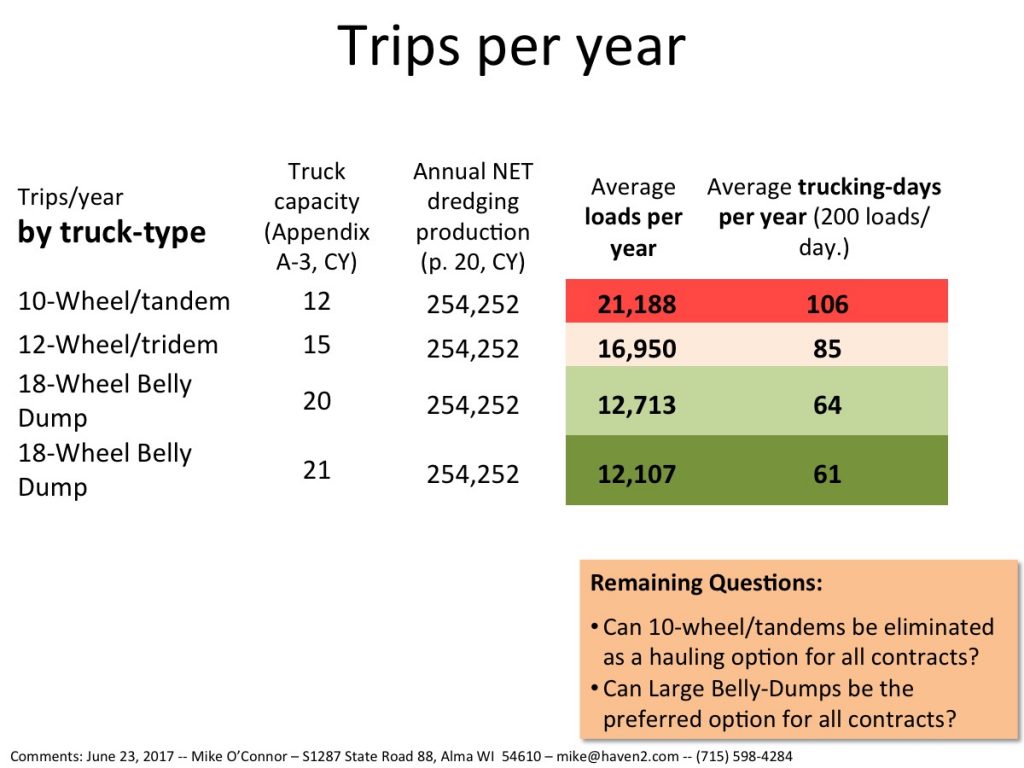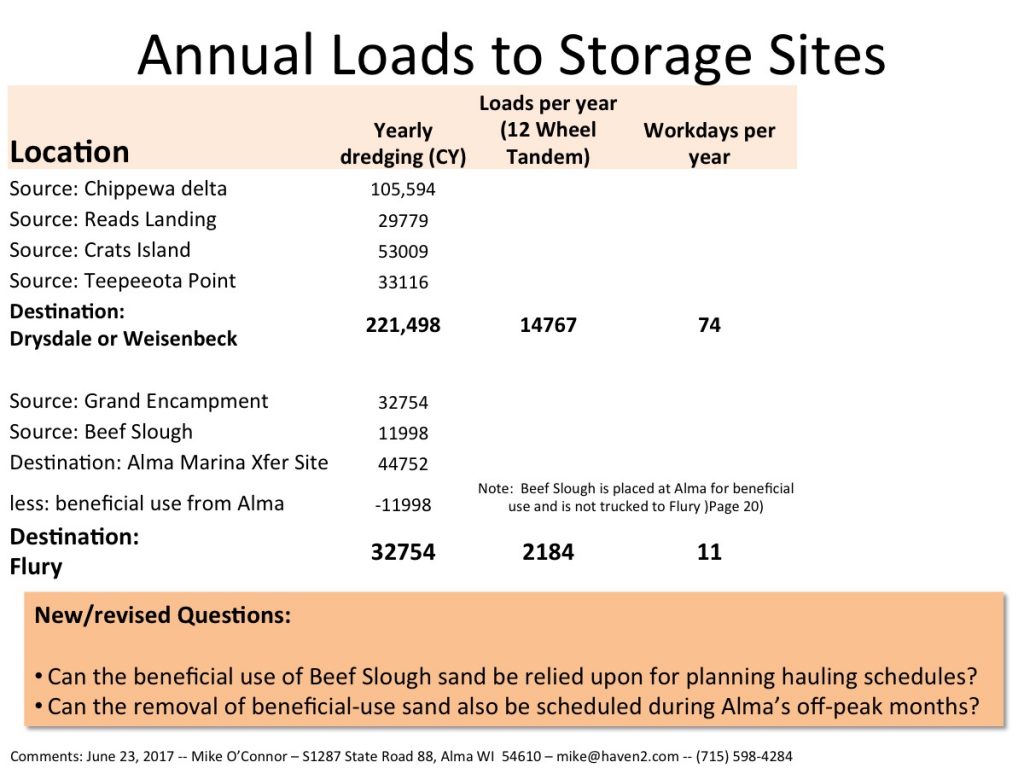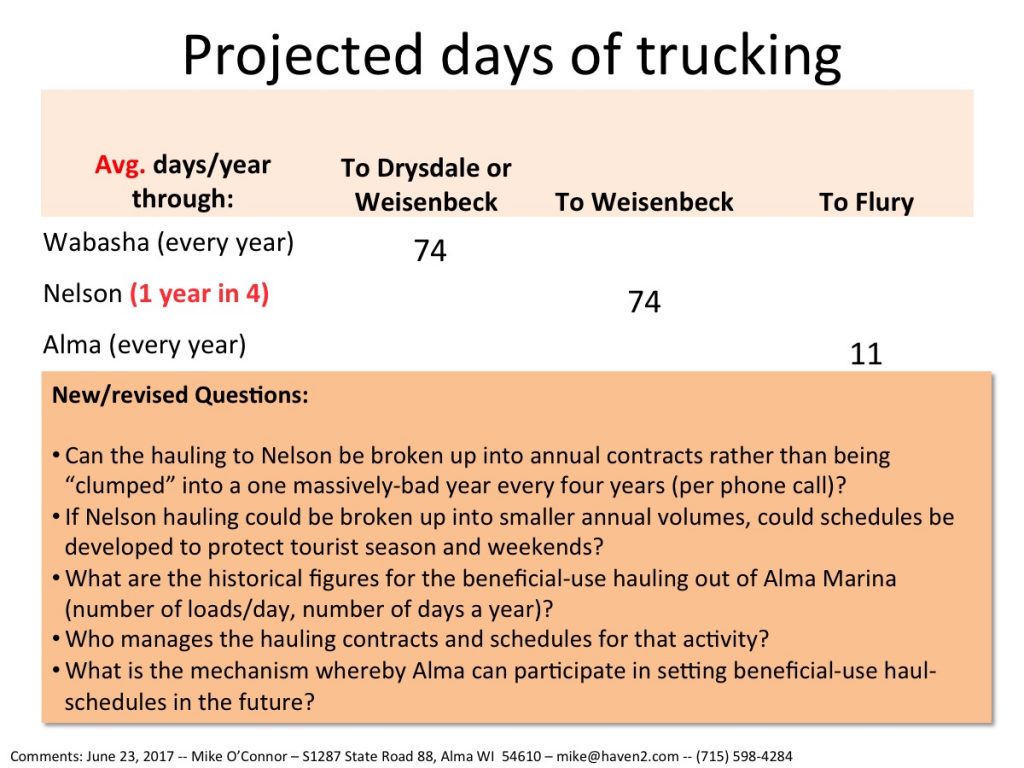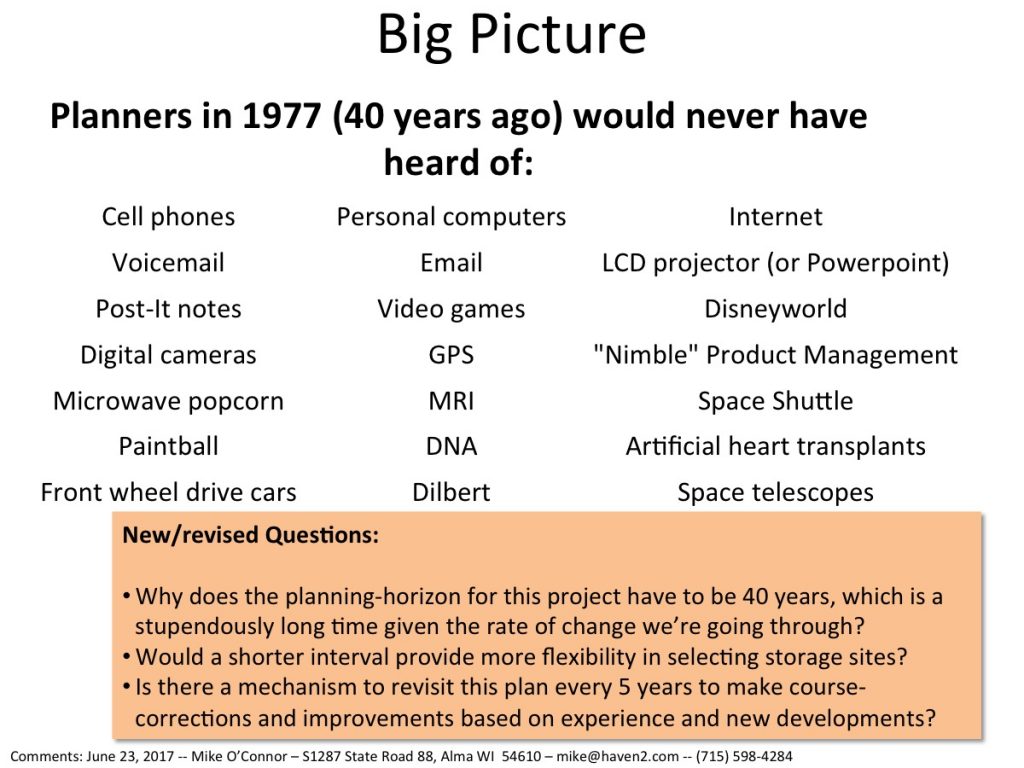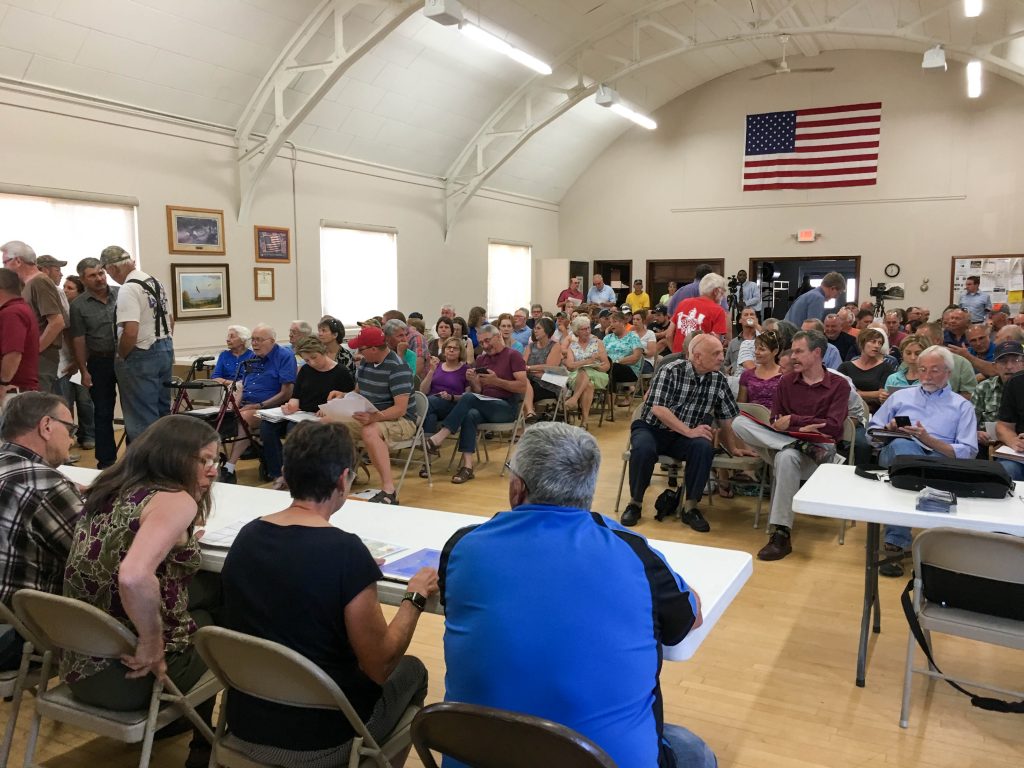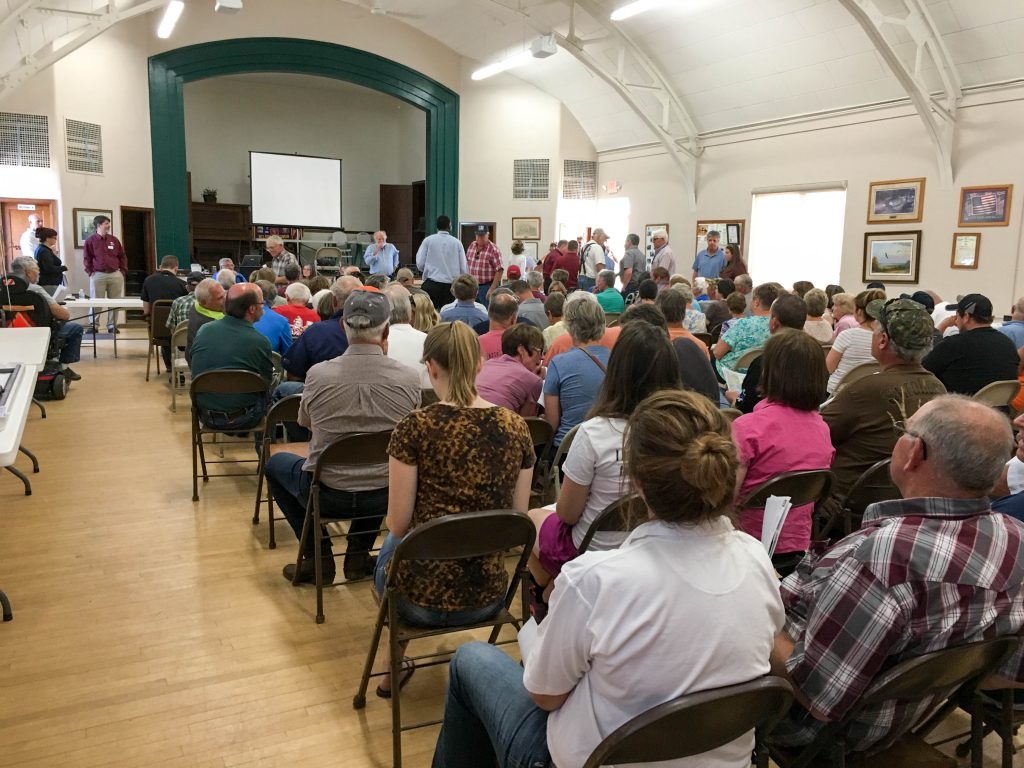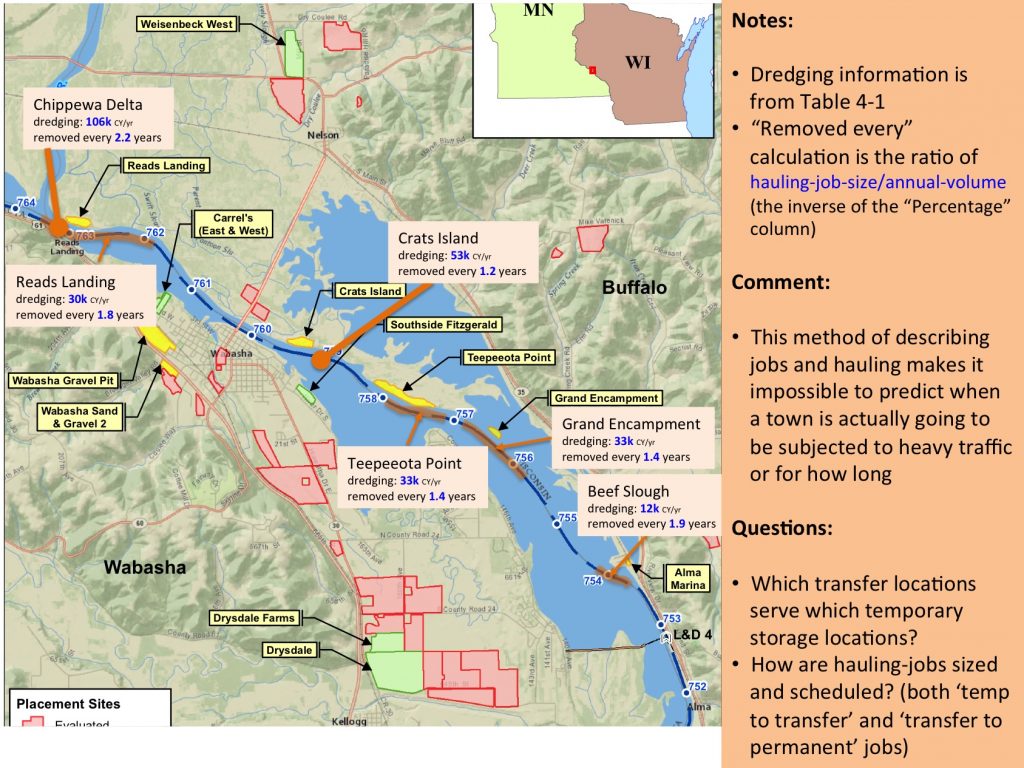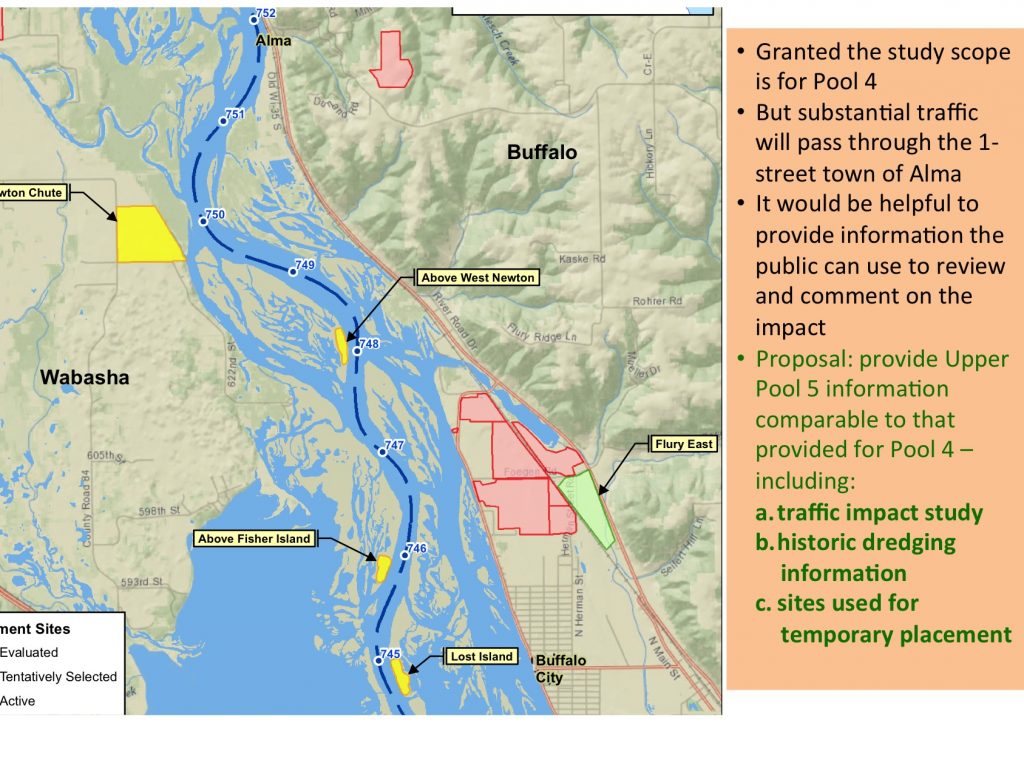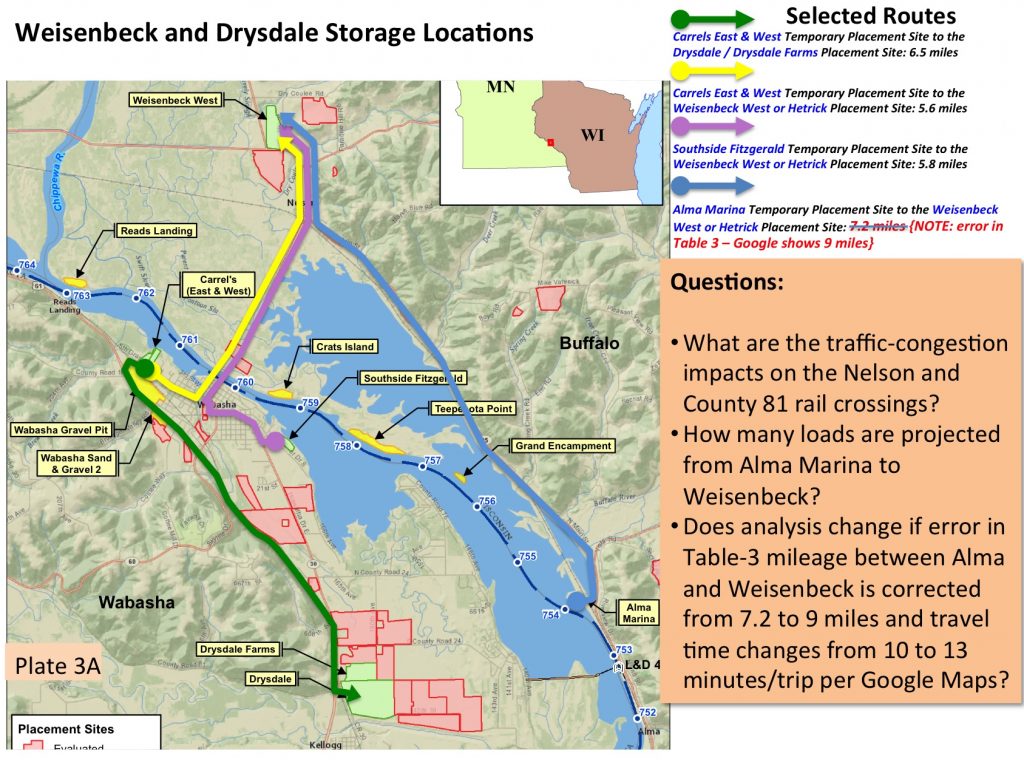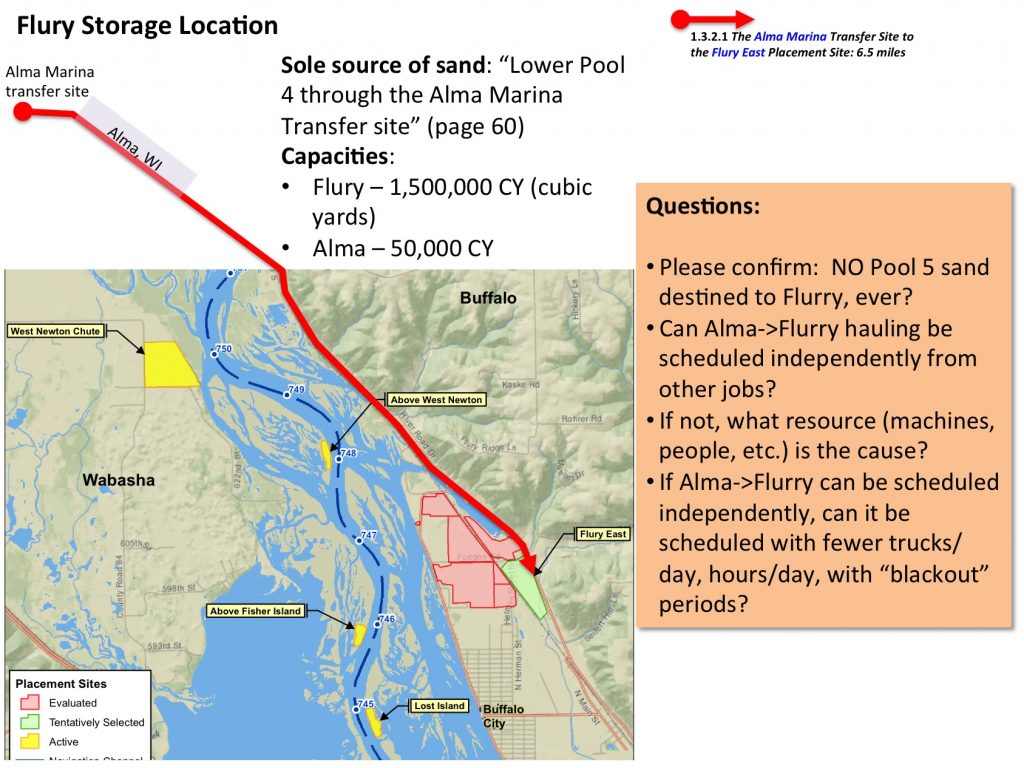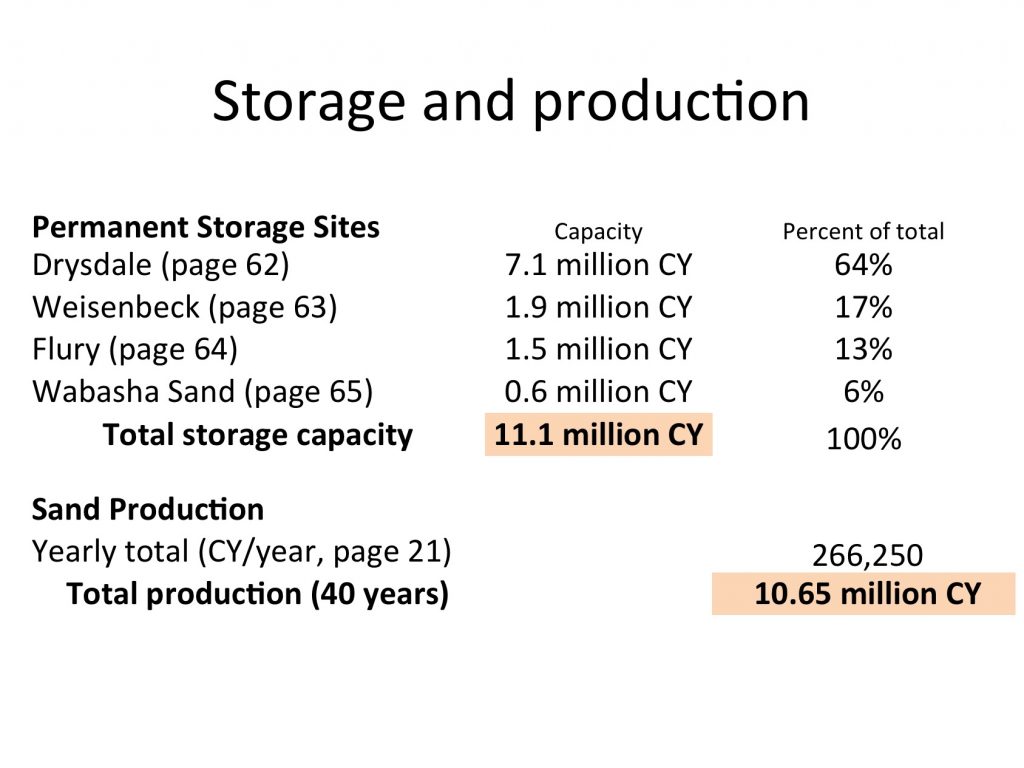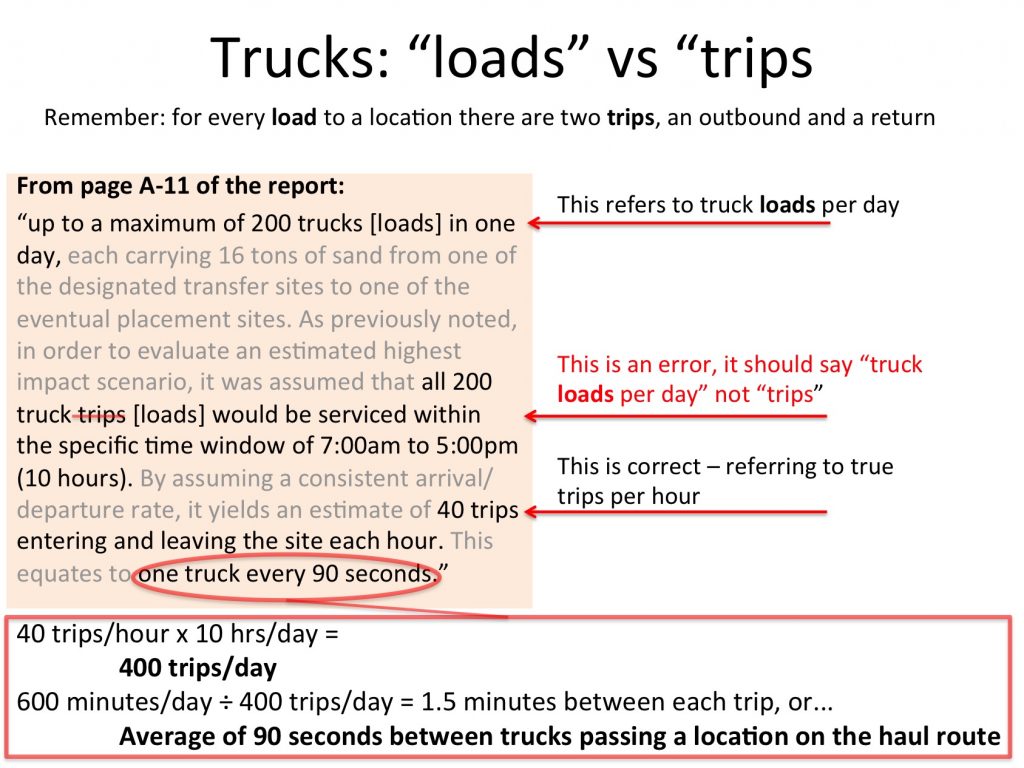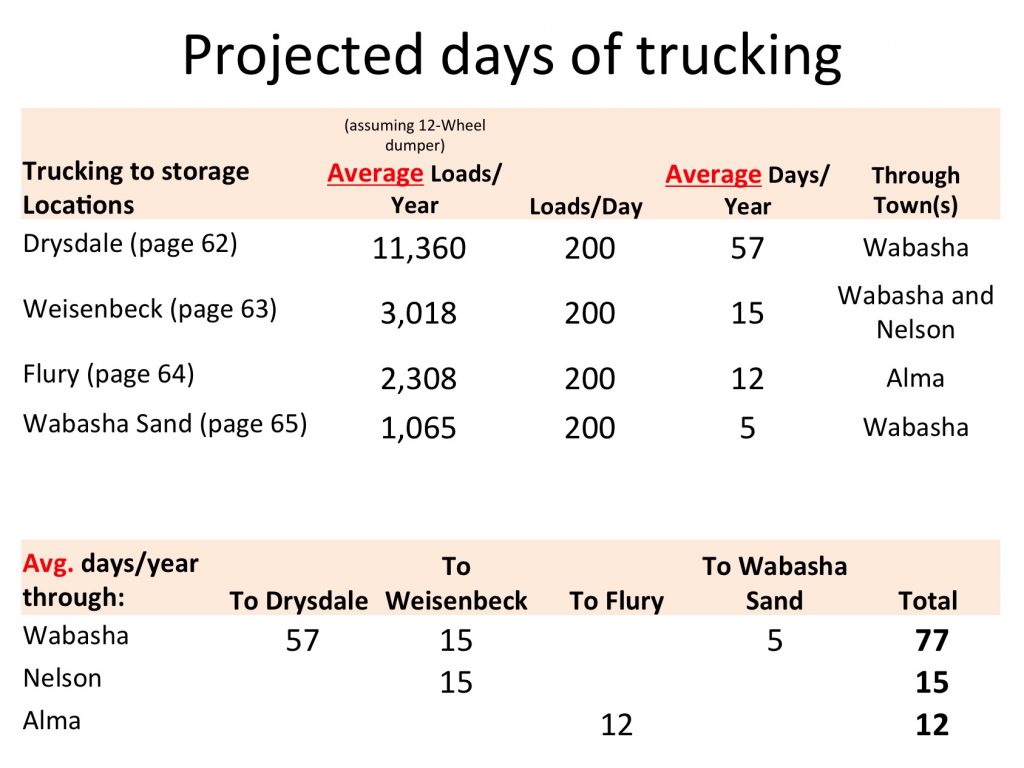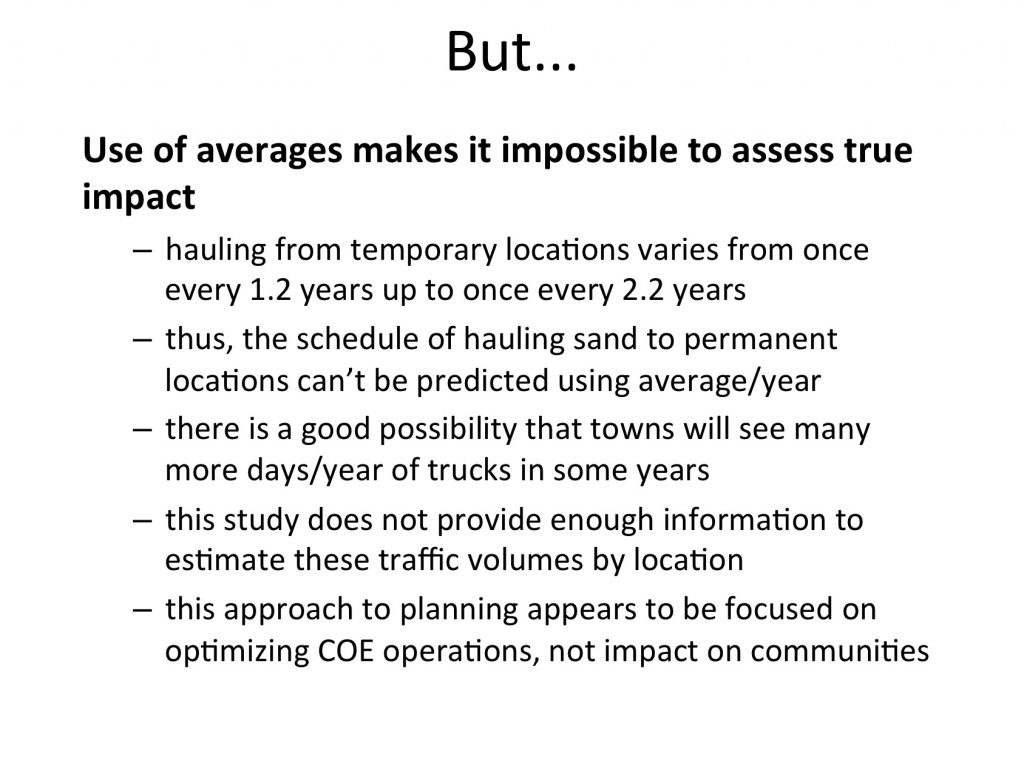Robert K. Edstrom
St. Paul District
U.S. Army Corps of Engineers
Attention: Project Management
180 5th St. E., Suite 700
St. Paul, Minnesota 55101-1678
Robert.K.Edstrom@usace.army.mil
Re: Comments on Lower Pool 4, 40 Year Plan for Disposal of Dredge Material
Major parts of the Plan seem to be driven by convenience to the Corps rather than minimizing the impact of the project on local residents and local governments. A more thoughtful Plan could address both goals.
Location, Size and Timing of the Acquisition
The Plan covers sand that will be coming down the Mississippi for the next 40 years and will be dredged over the next 40 years. The Plan, however, insists that all of the land needed for disposal must be acquired NOW. The Plan rejects one favorable site because it will not become available for five years, long before the 40 years are over.
The Plan also rejects smaller sites that could be used for a year, or two or three because they are not large enough to accommodate a 40-year project. Insisting on acquiring all of the land immediately pushes the Corps into looking at only the largest sites.
Drafting a Plan that matches the timing of acquiring and using land with the annual need for disposal would require more thought and planning by the Corps. However, that deeper analysis would allow for the use of smaller sites, using each of those sites over a shorter period of time, and restoring each of them more quickly – all of which would reduce the impact of the project on local residents and local governments.
The Plan says that every site will be used every year, each will be filled at a uniform rate, and a site will not be covered and reclaimed until it is filled at the end of 40 years. As noted earlier, if smaller sites were selected (many of which are already disturbed) they could be opened, filled and reclaimed in a year or two reducing the community impact substantially. The planning process, however, for the Corps would be more difficult.
Site Selection
The remark by the Corps representative at the Nelson public hearing about the Fitzgerald property was telling. “You turn off 61 onto the county road and the farm is right there.” He didn’t say it, but if you turn north from Nelson the Weisenbeck farm is right there the first one on the right. If you go south from Alma the Flury farm is right there the second one on the right. It appears that not much effort went into the search for alternative sites.
The criteria for selection are not clear and seem to be applied inconsistently. Several sites were rejected because they were too costly, yet at least one of the selected sites has a higher cost than sites rejected for being too expensive.
Likewise several sites were rejected as being too small, but at least one of the sites selected is smaller than sites rejected for being too small.
The Plan says that use of the dredge material for habitat construction was ruled out because “there was very little interest expressed” by the state agencies involved. However, that option might be reconsidered if “agencies’ goals change”. Someone in authority should tell the state agencies involved that their goals need to change.
Other Criteria
The draft Plan purports to compare the effects of carrying out the Plan with the effects of “doing nothing”. The Plan goes to some length to identify doing nothing with continuing present practices. Numerous times throughout the report, however, the Corps says the effects of continuing present practices are “unknown at this time” making any comparison meaningless.
Inconsistencies
There are inconsistencies within the written Plan itself and between the written Plan and statements by Corps representatives at the Nelson meeting.
Representatives at the hearing said not every site would be used each year. “Every year will be different.” Hauling when “convenient … when we need it.”
The Plan says the Flury site will accommodate all the dredge material unloaded at Alma. The Plan also says that some material will go north from Alma to Weisenbeck. Corps testimony said material from Wabasha would go to Flury. Without some clarity and consistency it will be difficult for local governments to plan for traffic.
The Plan says one of the benefits of the Weisenbeck property is that no railroad has to be crossed to get to it. Someone missed a double track on the route.
The Question of Least Cost
Corps representatives at the Nelson meeting placed great emphasis on “least cost”. The Plan provides only total cost numbers and no supporting information that would allow any reader to evaluate the accuracy of the Corps’ conclusion that the recommended sites are indeed the “least cost” sites.
The Corps representatives also testified that “social considerations” were taken into account and used as a tie breaker only when two sites had the same “least costs”. The Plan provides no information as to what social costs might have been taken into consideration or how they might have been evaluated and used in any particular decision. There is no clarity and no way for the reader to make an independent judgement about the Corps’ evaluation and conclusions.
Using social considerations only as a tie breaker between sites with the same dollar costs also rules out the possibility of ranking a higher cost site with few social costs as preferable to a lower cost site with high social costs.
Conflict with Federal and State Statutes and Local Ordinances
The Plan does not mention nor take into account the Federal and State statutes and local ordinances that restrict land use along and beside The Great River Road.
Other Comments and Considerations
There is other evidence that whoever was responsible for writing the Plan was not familiar with the area. The swans and the tourists at Rieck’s Lake are mentioned even though there have been no swans or tourists since the Lake was dredged almost ten years ago. At the same time there is no mention of the hundreds of motorcycles that run the county roads and fill the streets of Nelson and Alma every weekend from May thru October.
The Plan takes into account railroad crossings and left turns and old cultural artifacts, but doesn’t mention the lives, plans, family history and the use of the land the Corps wants to take.
The Plan ties the timing and scheduling of truck traffic to when “dredge crews normally operate” – regardless of normal traffic patterns, or the hours when residents might be least inconvenienced.
There is no evidence in the Plan that the Corps has taken into account the effects a large sand pile in the neighborhood will have on the value of neighboring property or the quality of life now enjoyed by neighbors.
The Plan doesn’t commit the Corps to any particular action. The word “likely” is used quite often in describing the intentions of the Corps. The uncertainty makes it difficult for residents and local governments to plan how to cope with the Corps’ activities.
The Plan closes by justifying the taking of prime farmland because there is “lots of farmland”. The words are reminiscent of what was said in the past: there are lots of forests, lots of buffalo, lots of passenger pigeons, lots of cod in the oceans, lots of shrimp in the Gulf.
Lack of Confidence in the Corps
The draft Plan calls for a public hearing on the draft Plan. When asked after the Plan was released if there was going to be a public hearing a representative of the Corps replied that no public hearing was planned. The Corps agreed to attend the public hearing in Nelson only after the Buffalo County Board of Supervisors scheduled the meeting and posted a notice that the Corps had been invited to present the Plan and answer questions. If the Corps wasn’t going to keep that first commitment, how can residents and local governments rely on any of the other commitments in the Plan?
For all of the above reasons we urge the Corps to reject this Plan and restart the planning process and engage residents and local governments in the discussions from the beginning. The Plan will affect our lives and our communities for the next 40 years. We should be consulted and kept informed throughout the drafting process. Secrecy only undermines confidence in the product.
Signed by all members of the Buffalo County Board of Supervisors.


